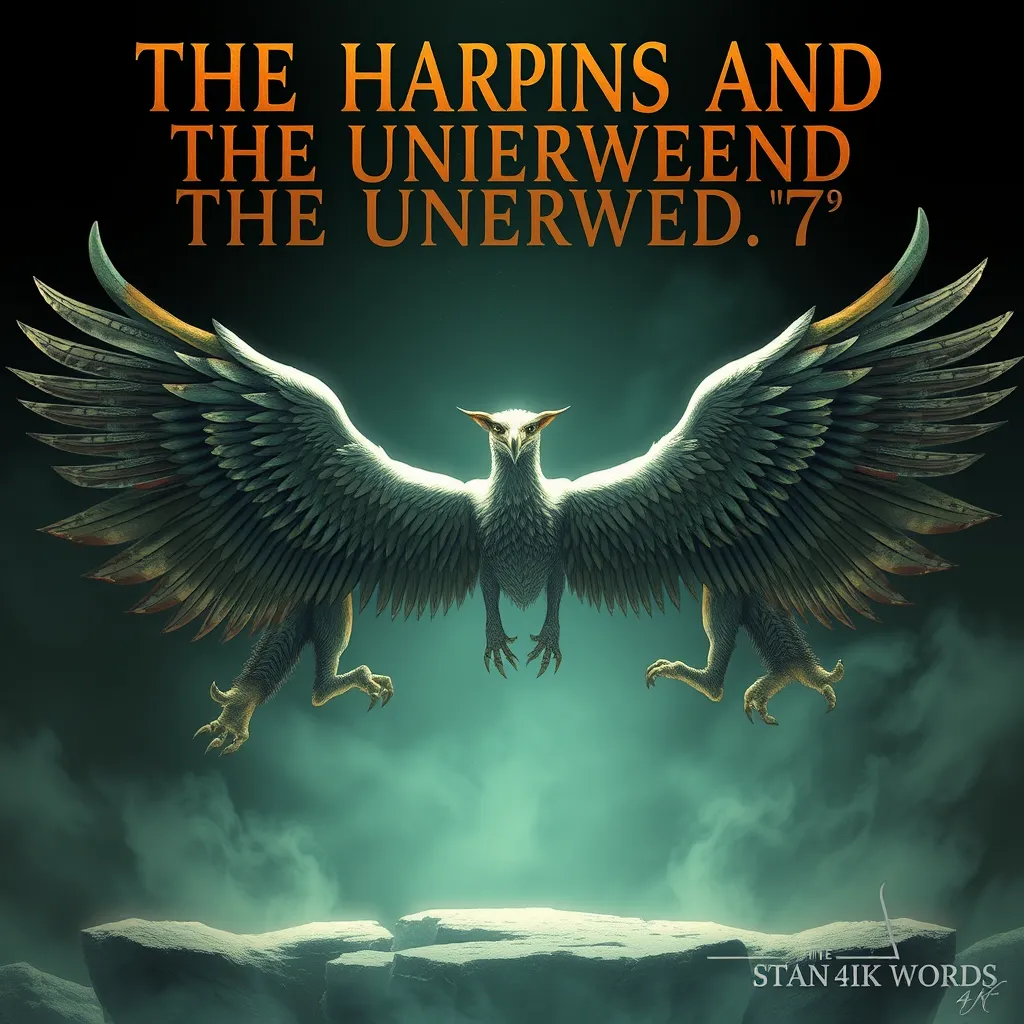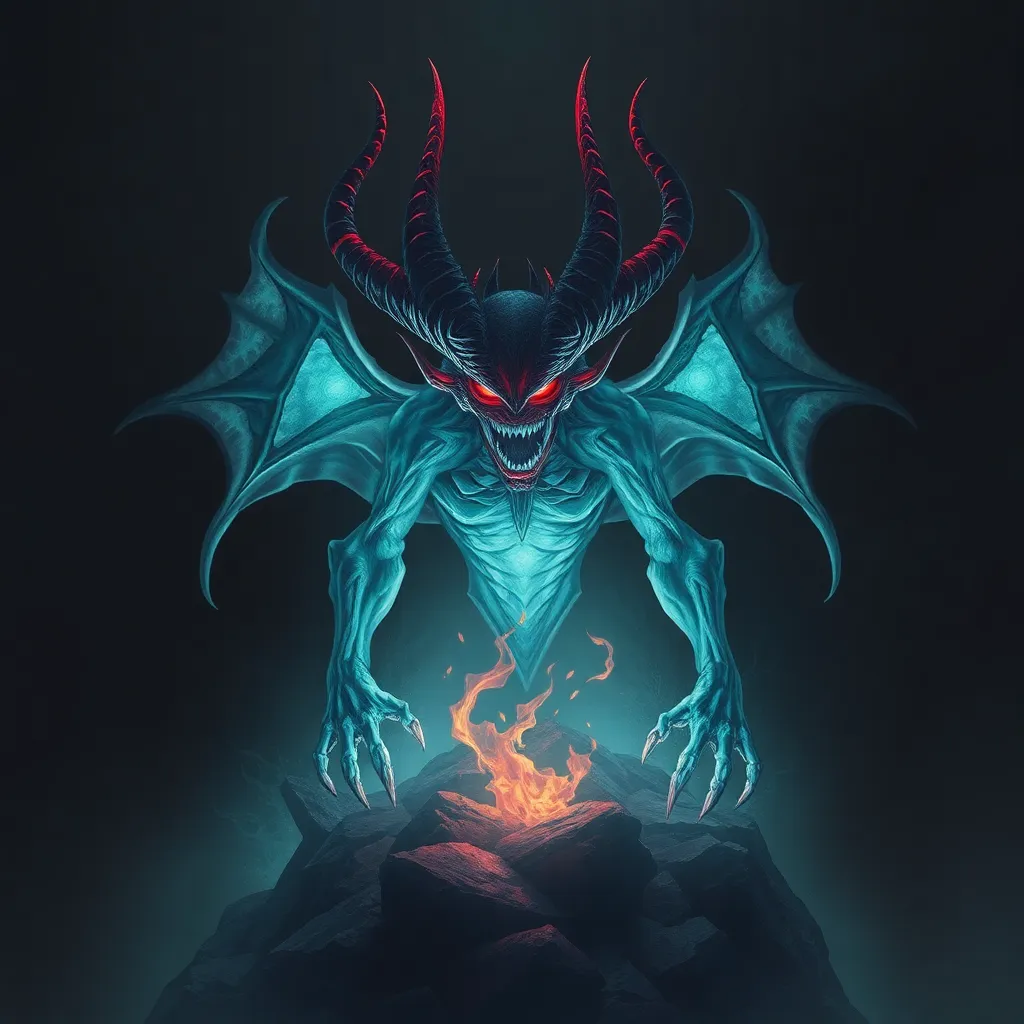The Harpies and the Underworld: A Look at Their Connection to Death and Punishment
I. Introduction
The Harpies are fascinating figures in mythology, often depicted as winged spirits that embody fear and retribution. These creatures, with their dual nature of being both avengers and tormentors, play a significant role in the ancient beliefs surrounding death and punishment. The Underworld, in turn, is a critical component of these beliefs, serving as the final resting place for souls and the realm of the dead. This article aims to explore the intricate connection between the Harpies and the Underworld, shedding light on their roles in mythological narratives and their symbolism in ancient cultures.
II. Who Are the Harpies?
A. Definition and characteristics of Harpies
The Harpies are often described as winged women with sharp claws and a fierce demeanor. In Greek mythology, they are considered agents of punishment, tasked with capturing and tormenting those who have incurred the wrath of the gods. Their name, derived from the Greek word “harpyiai,” translates to “snatchers,” reflecting their swift and predatory nature.
B. Historical origins and cultural variations
The origins of the Harpies can be traced back to ancient Greek literature, where they appear in various texts, including the “Argonautica” by Apollonius of Rhodes. Over time, their portrayal evolved, and they emerged in Roman mythology as well. Different cultures have adapted the concept of Harpies, often reflecting local beliefs about punishment and retribution.
C. Symbolism of the Harpies in Greek mythology
In Greek mythology, the Harpies symbolize the darker aspects of justice and vengeance. They are often associated with storms and whirlwinds, linking them to chaos and nature’s wrath. Their role as enforcers of divine justice underscores the belief that the gods would not only punish wrongdoers but also send their agents to carry out these punishments.
III. The Underworld in Mythology
A. Description of the Underworld and its realms
The Underworld, known as “Hades” in Greek mythology, is depicted as a vast and complex realm where souls reside after death. It comprises different regions, including the Elysian Fields for the virtuous, the Asphodel Meadows for ordinary souls, and Tartarus for the damned. Each area serves a specific purpose, highlighting the moral choices made during one’s lifetime.
B. Key figures associated with the Underworld
Several significant figures inhabit the Underworld, including:
- Hades: The god of the Underworld, ruling over the dead and overseeing their fates.
- Persephone: The queen of the Underworld, representing the cycle of life and death.
- Charon: The ferryman who transports souls across the river Styx, ensuring they reach their afterlife destination.
C. The role of the Underworld in the cycle of life and death
The Underworld plays a crucial role in the cycle of life and death, serving as both a final destination and a place of judgment. Souls are evaluated based on their earthly deeds, determining their fate in the afterlife. This moral framework reflects the ancient belief in justice and the consequences of one’s actions.
IV. Harpies as Agents of Punishment
A. The role of Harpies in enforcing divine justice
The Harpies are often depicted as enforcers of divine justice, punishing those who have wronged the gods or violated sacred laws. Their terrifying presence serves as a reminder of the consequences of immoral actions, reinforcing the idea that no one can escape divine retribution.
B. Notable myths involving Harpies and punishment
One of the most famous myths involving the Harpies is the story of Phineas, a seer who was tormented by the Harpies for revealing the future. They would snatch away his food, leaving him in a state of perpetual hunger and despair. This myth illustrates their role as agents of punishment, serving the gods’ will by inflicting suffering on wrongdoers.
C. The moral implications of their actions
The actions of the Harpies raise questions about morality and justice. While they serve the gods, their methods are often brutal and indiscriminate, blurring the lines between justice and cruelty. This duality prompts reflection on the nature of punishment and the complexities of divine retribution.
V. The Connection Between Harpies and the Underworld
A. Harpies as psychopomps: Guides for souls
In some interpretations, the Harpies serve as psychopomps, guiding souls to the Underworld. Their swift movements and control over the winds align with the idea of transporting souls to their final resting place, further entrenching their connection to death and the afterlife.
B. Their role in transporting the souls of the damned
The Harpies are sometimes depicted as responsible for transporting the souls of the damned to Tartarus, ensuring that those who committed heinous acts face their appropriate punishments. This reinforces their role as agents of divine justice, linking them directly to the Underworld’s retributive aspects.
C. The dual nature of Harpies: Avenging spirits and helpers
The Harpies embody a dual nature, acting as both avenging spirits and helpers. While they punish the wicked, they also assist in the transition of souls, showcasing their complex role in the mythological framework of life, death, and justice.
VI. Interpretations and Symbolism
A. The Harpies as representations of wrath and vengeance
The Harpies are often interpreted as embodiments of wrath and vengeance. Their fierce appearance and violent actions symbolize the consequences of anger and the need for retribution against those who wrong others.
B. Symbolic connections between Harpies and death
The connection between the Harpies and death is evident in their roles as punishers of the damned and guides for souls. They serve as a reminder of mortality and the inevitability of divine judgment, emphasizing the moral lessons inherent in their myths.
C. Artistic depictions and their evolution over time
Throughout history, the artistic depictions of Harpies have evolved, reflecting changing perceptions of justice and punishment. From ancient pottery to modern literature, the Harpies have been portrayed in various ways, ranging from fearsome creatures to tragic figures trapped by their roles.
VII. Modern Interpretations and Cultural Legacy
A. Influence of Harpies in literature and popular culture
The Harpies continue to influence literature and popular culture, appearing in works ranging from classical poetry to contemporary fantasy novels. Their complex nature and symbolism resonate with modern audiences, allowing for a deeper exploration of themes such as justice and vengeance.
B. The ongoing fascination with their mythological role
Fascination with the Harpies persists, as they represent the timeless struggle between good and evil, and the consequences of one’s actions. Their portrayal as both punishing and guiding figures invites ongoing debate and interpretation.
C. Comparative analysis with other mythological figures related to death
When compared to other mythological figures related to death, such as Charon or the Grim Reaper, the Harpies stand out due to their dual nature. While Charon serves solely as a guide, the Harpies embody both punishment and guidance, enriching the narrative of the afterlife in mythology.
VIII. Conclusion
In summary, the Harpies are intricate figures that embody themes of death, punishment, and divine justice in mythology. Their connection to the Underworld reveals deep-seated beliefs about morality and retribution, showcasing the complexities of ancient thought regarding life and death. The enduring legacy of the Harpies in literature and culture highlights their significance in understanding the human experience of justice and consequence, ensuring their place in the annals of mythological history.



